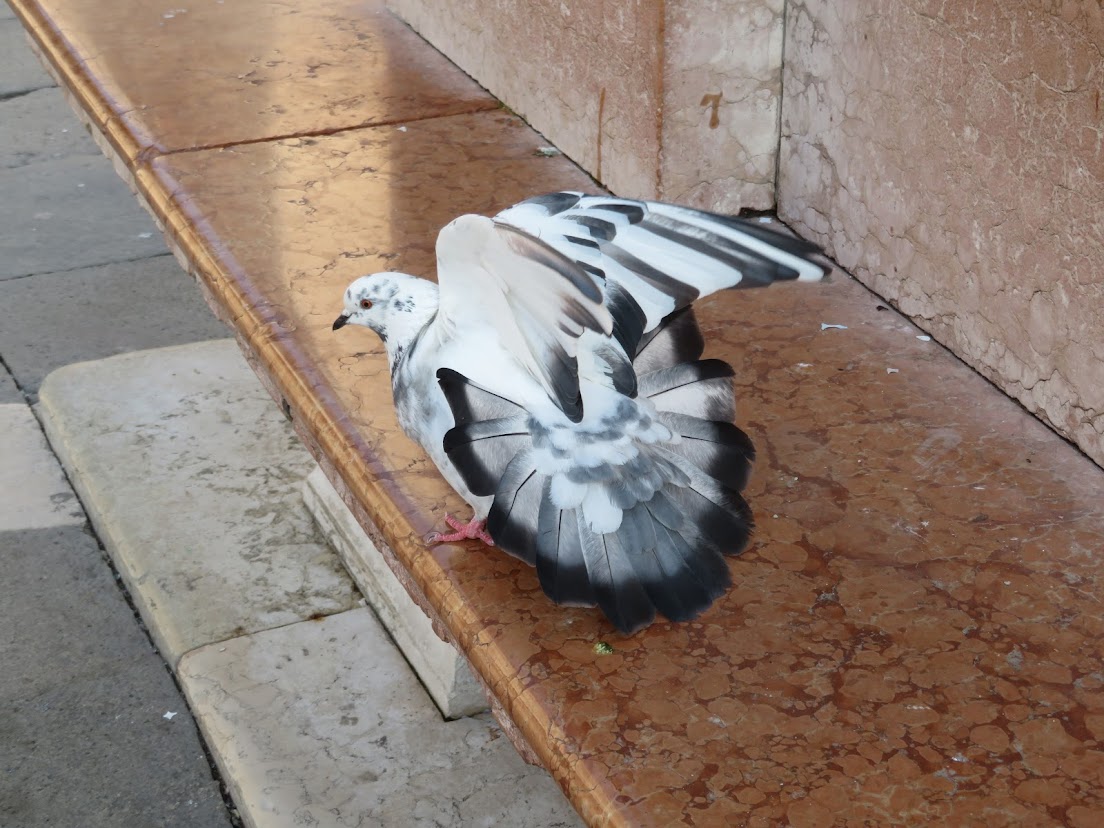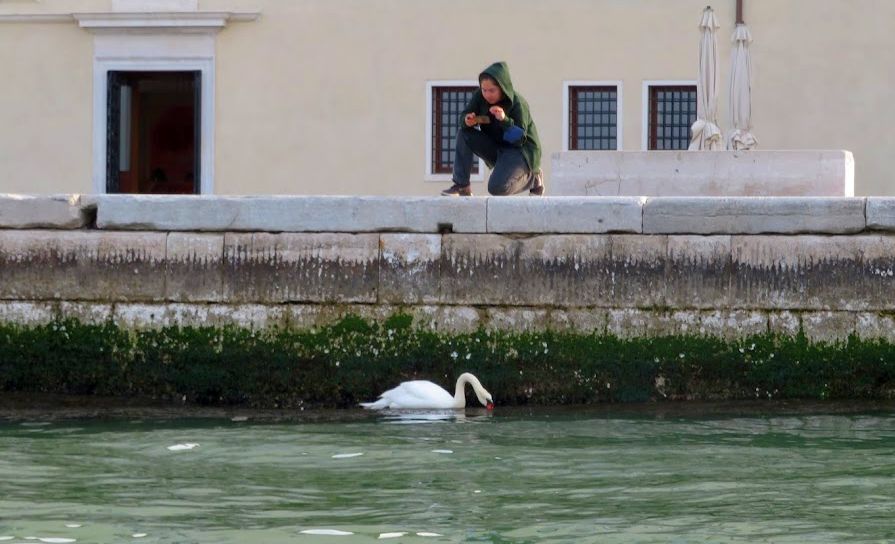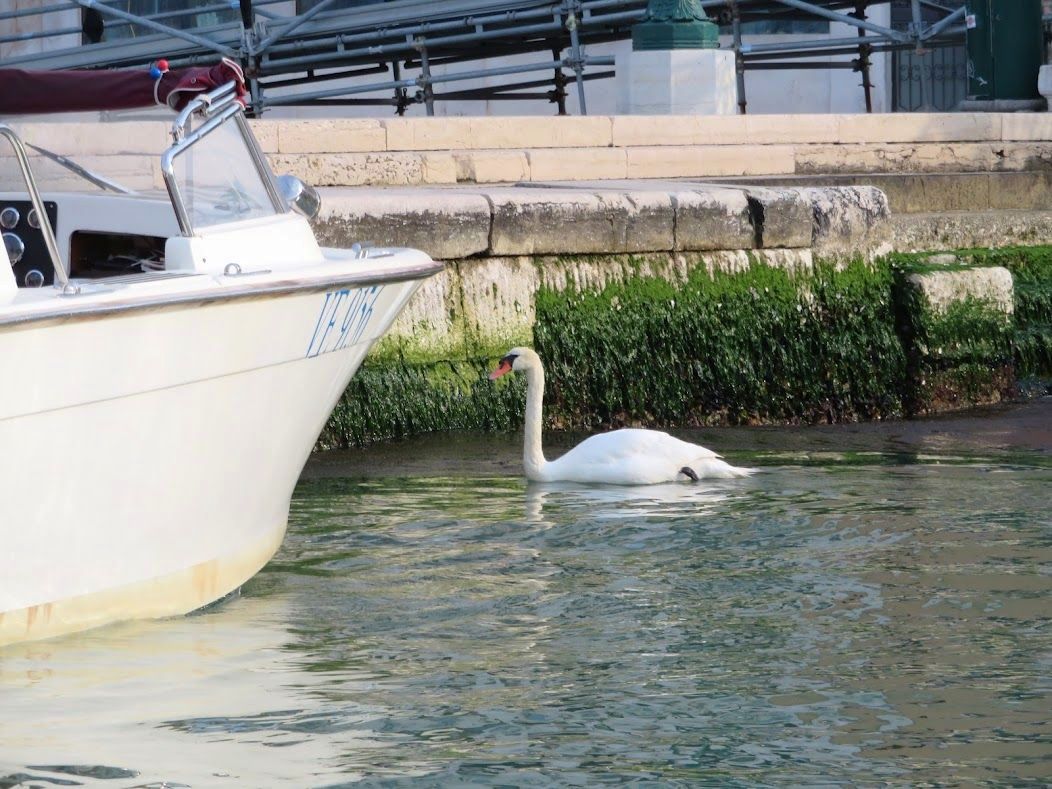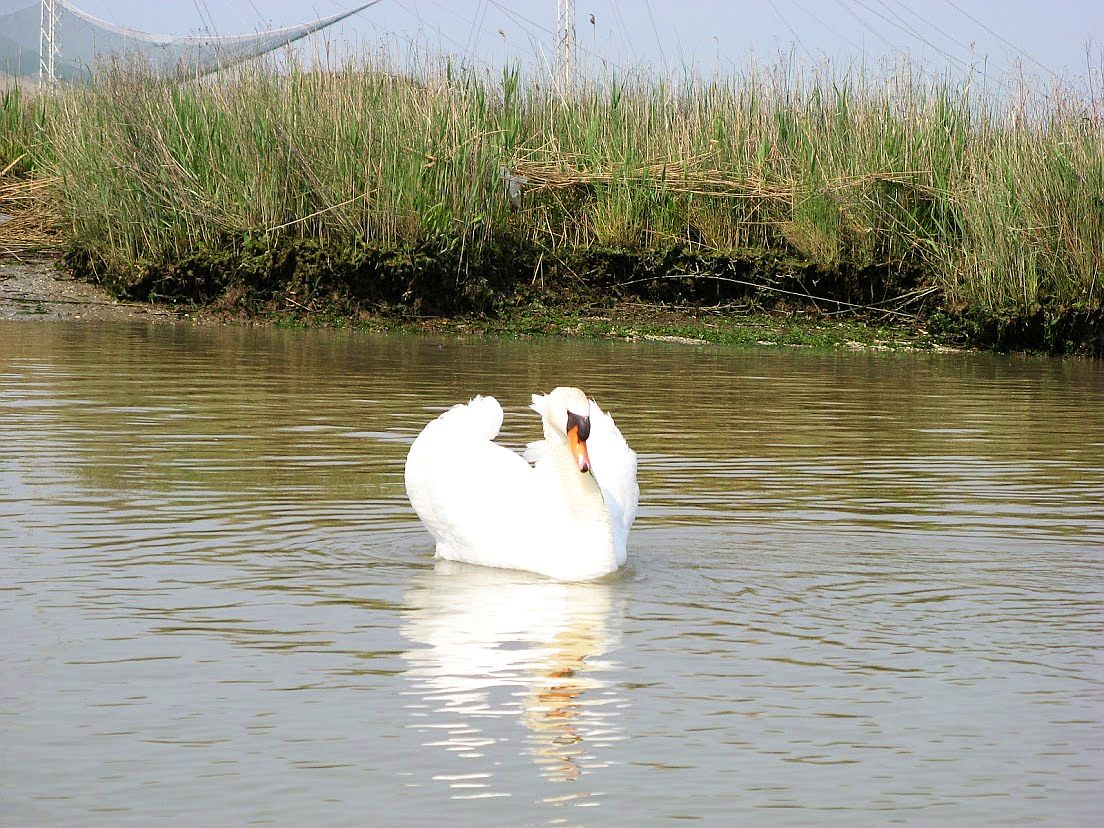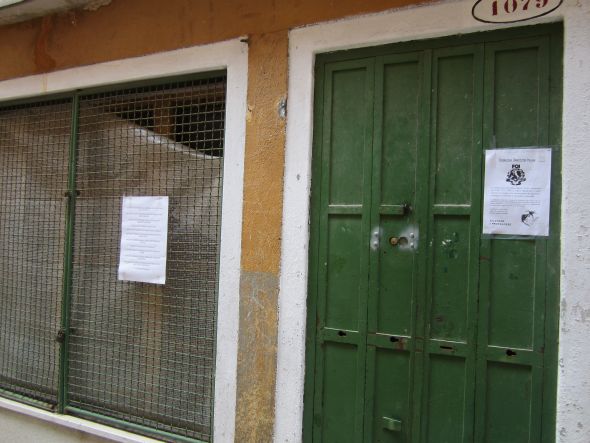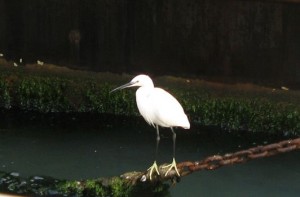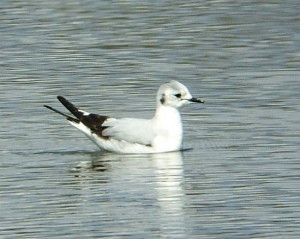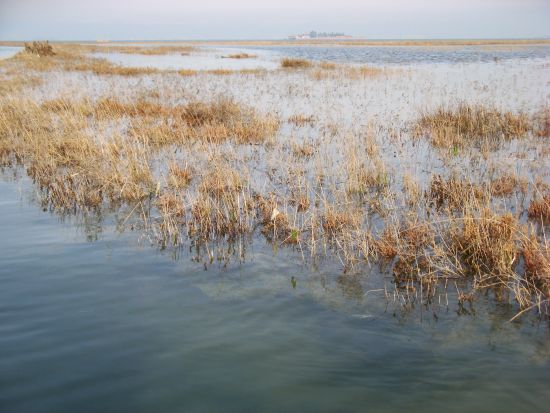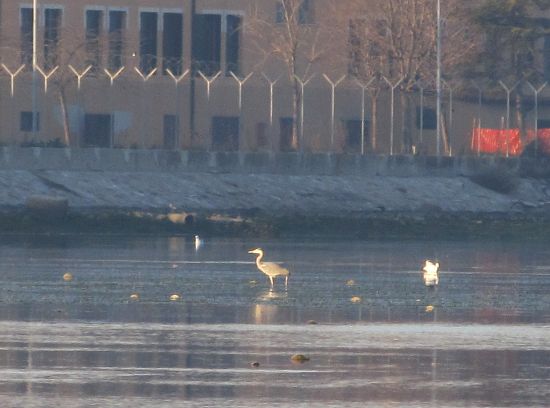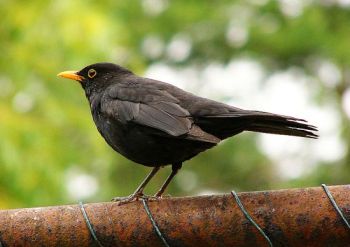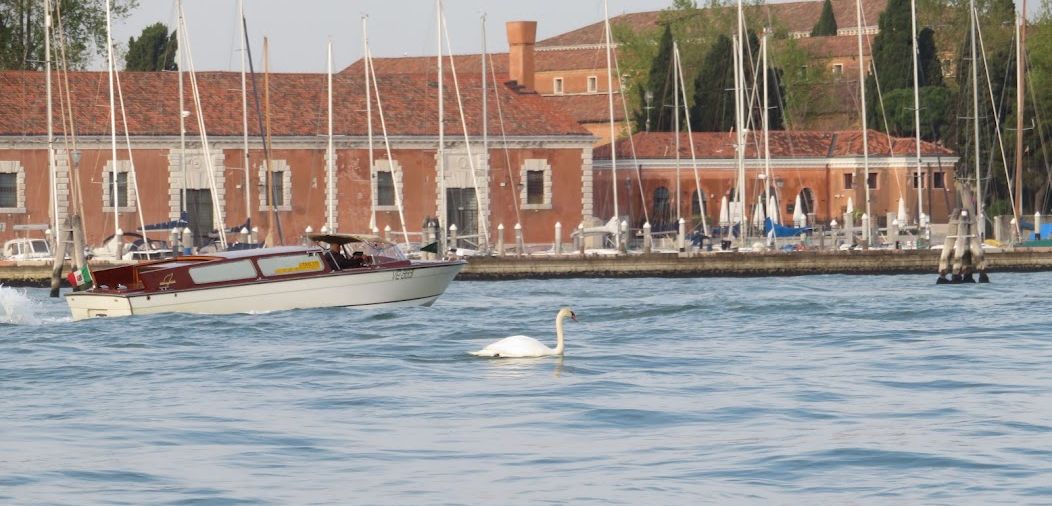
May 1 was a national holiday, here and in many other countries, and it’s generally known as International Workers’ Day. So in honor of workers everywhere, we also did not work that day. We went out for an early morning row, and were amazed to be met in the Bacino of San Marco by a very fine, and very unexpected, feathered friend.
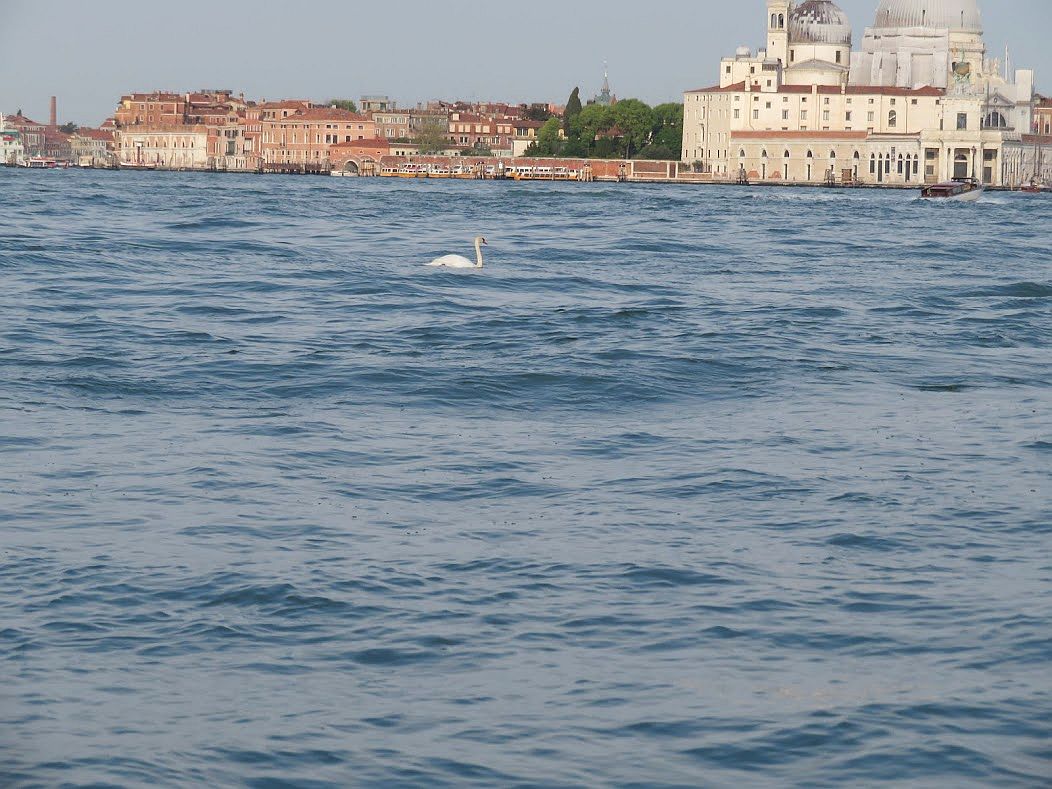
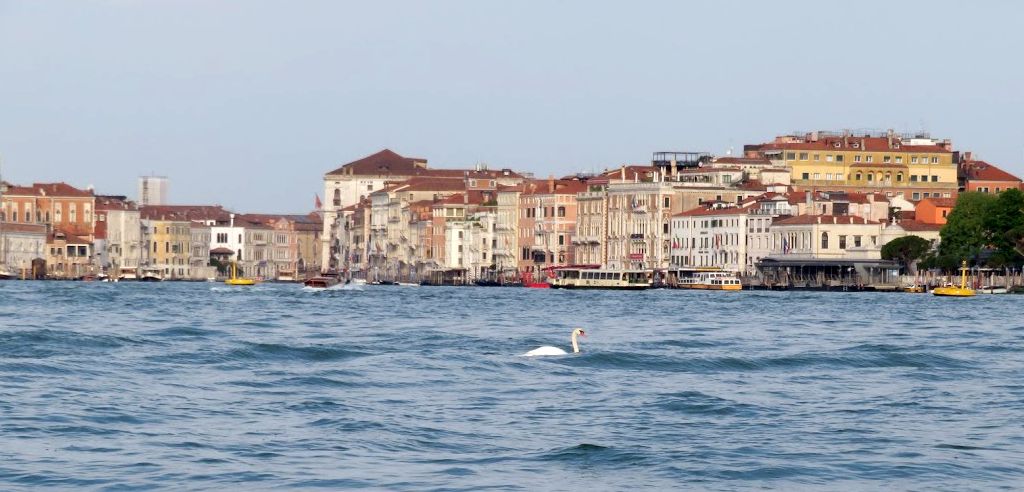
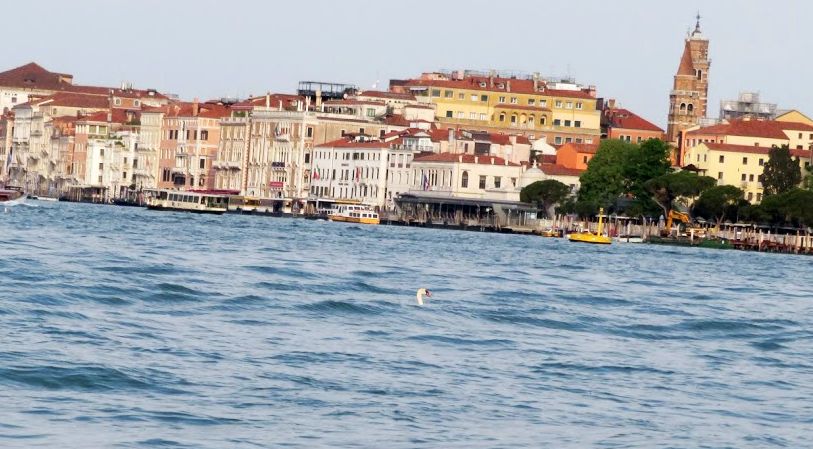
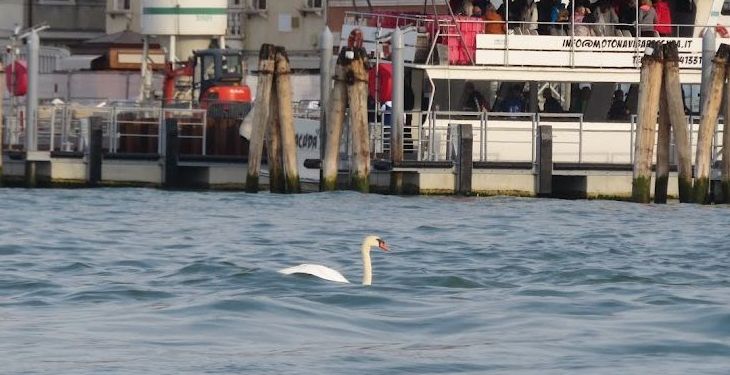
We have often seen a pair of swans in the northern lagoon, beyond Torcello, and also on the Brenta river near Malcontenta; one time we counted nearly 50 floating in the distance near Sant’ Erasmo. Lino told me that when he was a lad, some birds that we now commonly see in the city, such as cormorants, egrets, and seagulls, never came to town. You’d see them only in the distance, he says, if you saw them at all. Now they’re everywhere.
But the swans weren’t to be seen anywhere. About 35 years ago, Giampaolo Rallo, now president of the Mestre Pro Loco, then a naturalist at the Natural History Museum, noticed that there wasn’t a swan to be found in the lagoon, “not even if you paid it,” as one account put it. So he got what he calls “this crazy idea” to bring back the swans. On April 13, 1984, the World Wildlife Fund (WWF), together with the Gazzettino, launched a drive to find individuals willing to sponsor (fancy word for “pay for”) pairs of swans — not a small contribution, considering that a pair cost the equivalent of $315 today.
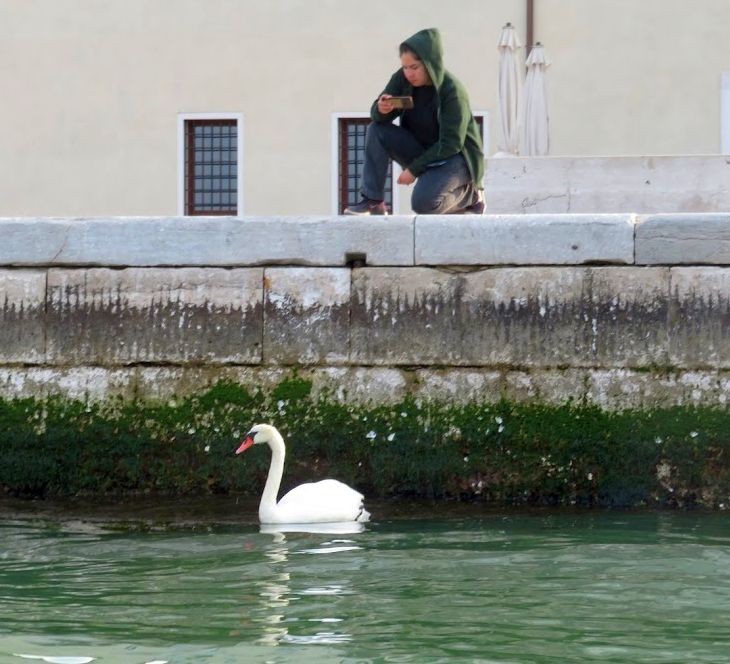
Over a period of two years, up to one hundred couples were acquired in the Netherlands and placed in the “fish valleys” of the southern lagoon. “It was a great cultural work,” Rallo explained to a journalist from La Nuova Venezia in 2019, “because we had to teach the respect of all the great waterbirds — I’m thinking also of the flamingoes. But there was real enthusiasm in the city for this initiative and there were important signs, such as the participation of Federcaccia Venezia” (the hunters’ association) “which bought a pair and made their volunteers available to watch over the swans to prevent anyone from disturbing or wounding them.” Who would hurt a swan? Well, hungry people a few generations back had no problem with trying to get these spectacular creatures on the table.
Today there are a thousand swans in the lagoon, and are sometimes seen even in Mestre’s modest waterways. A breeding pair named Silvia and Peter live near the lagoon at Caorle, and are awaiting the hatching of their eleventh brood of cygnets.
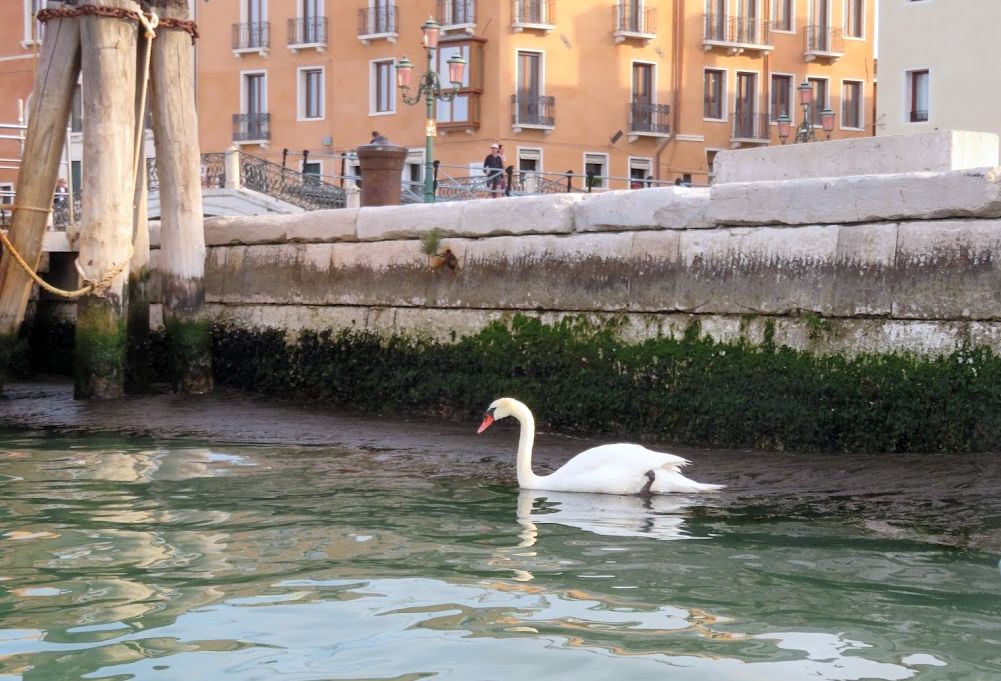
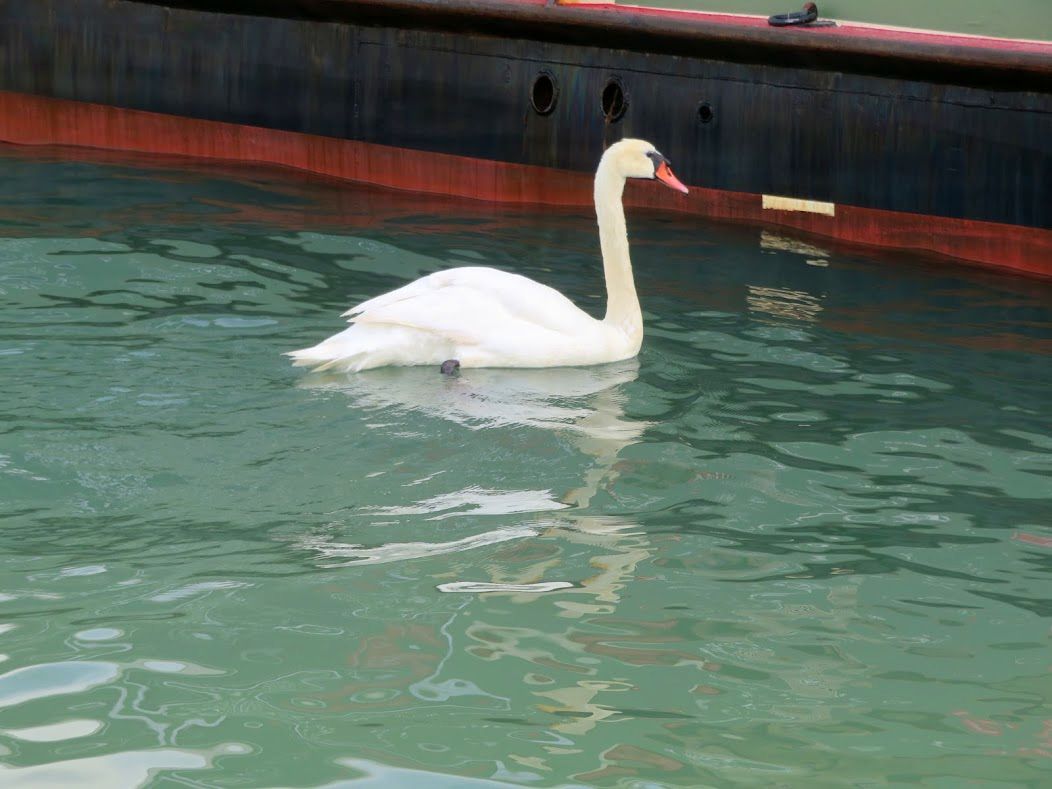

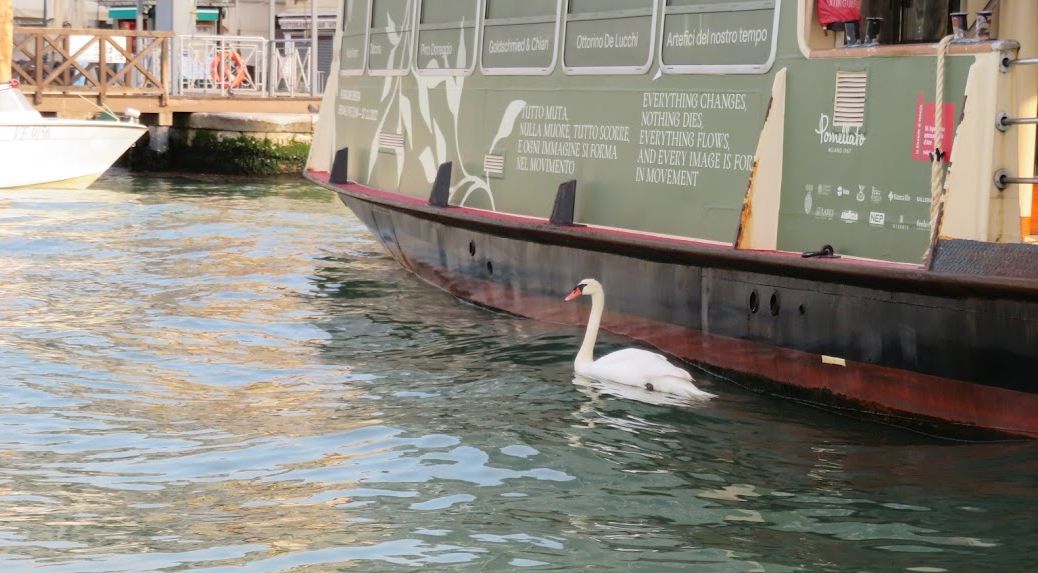
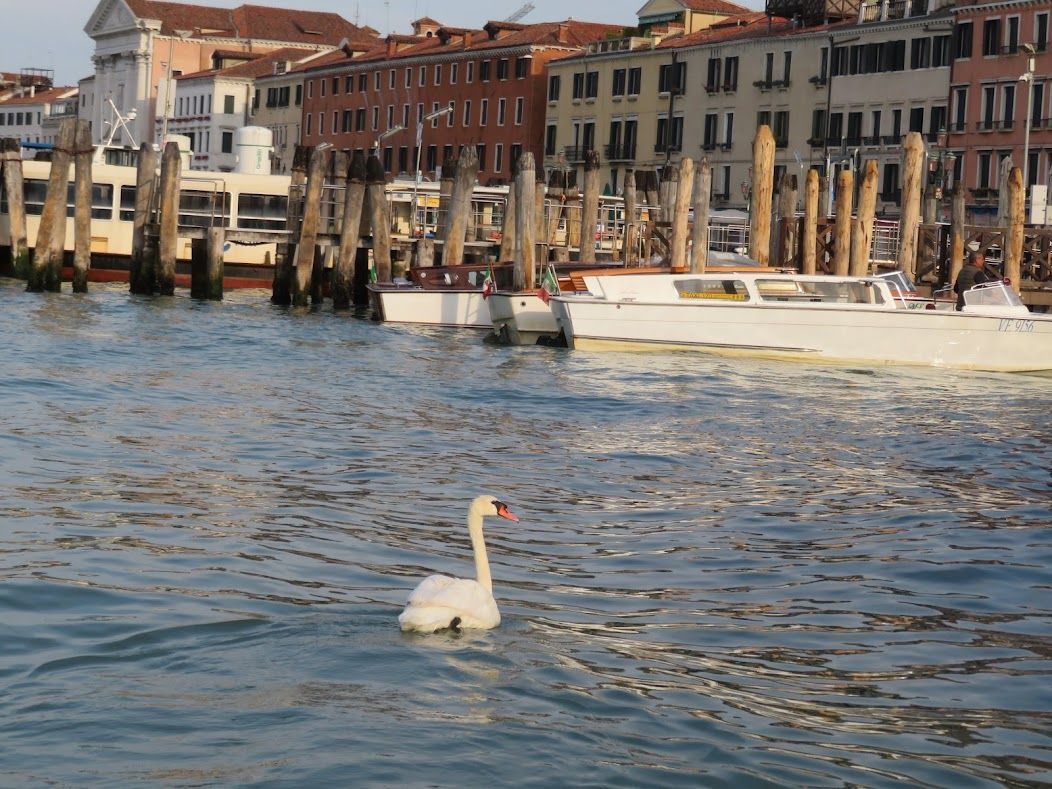
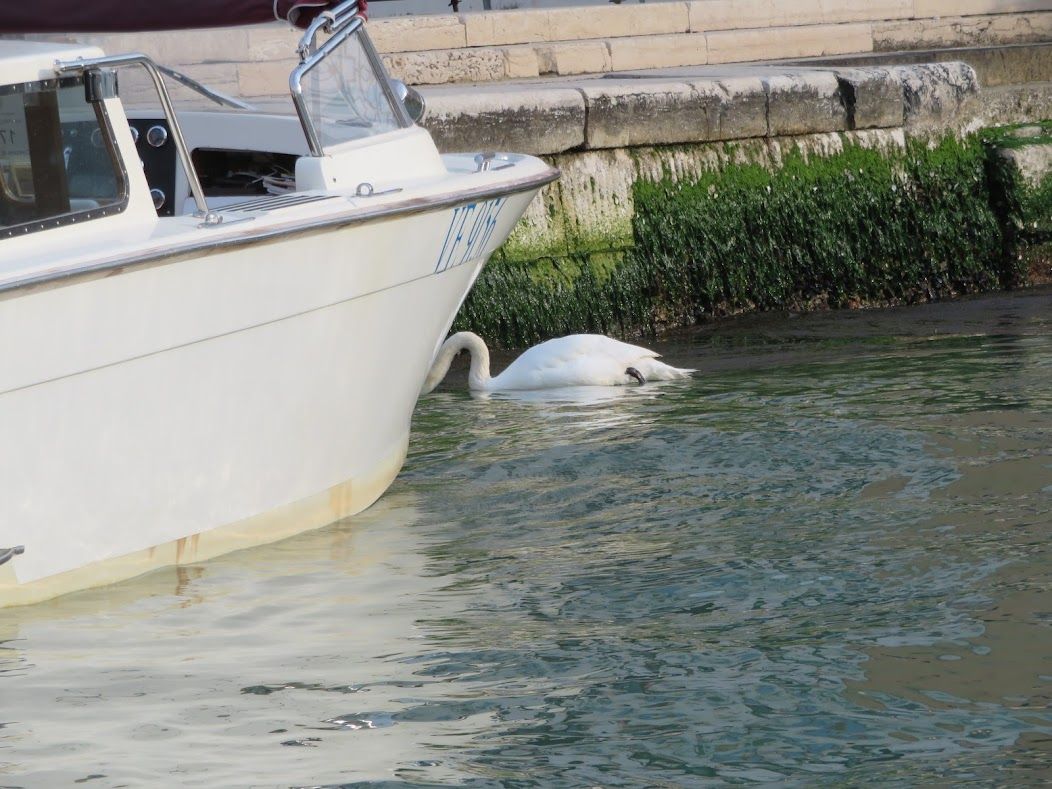
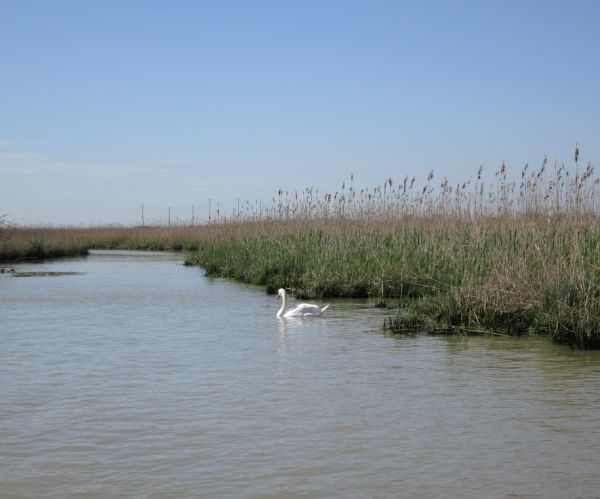
My most powerful memory of swans was a moment that was not, and anyway could not have been, photographed. It all happened so quickly.
Years ago, we were out rowing near the island of Santo Spirito on a deep grey morning in winter. Suddenly a trio of large birds flew toward us — three swans — flying so low it seemed we could touch them.
I had never seen swans flying, much less so near. As they passed overhead, their long graceful necks undulated slightly, and a barely discernible murmuring sound came from their throats.
Swans may be beautiful when they’re doing nothing, but when they fly they are magic.
